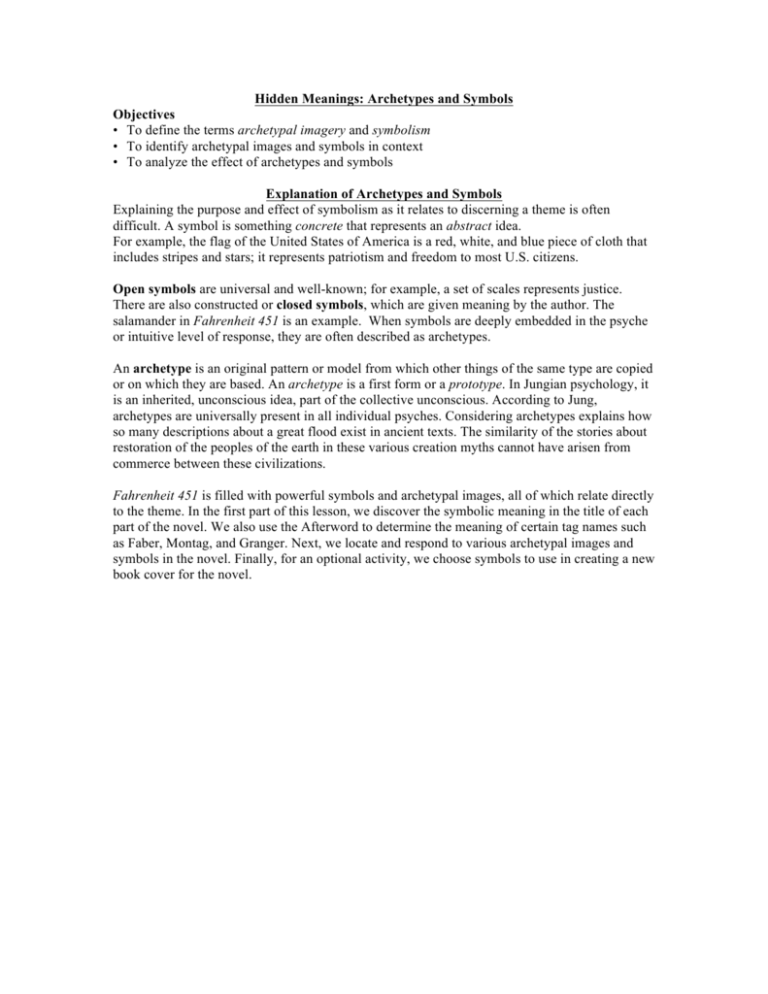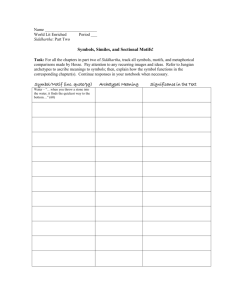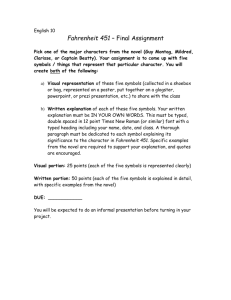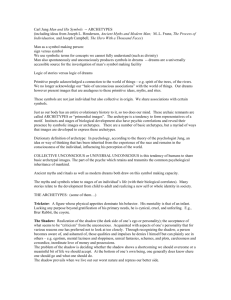Hidden Meanings: Archetypes and Symbols Objectives • To define
advertisement

Hidden Meanings: Archetypes and Symbols Objectives • To define the terms archetypal imagery and symbolism • To identify archetypal images and symbols in context • To analyze the effect of archetypes and symbols Explanation of Archetypes and Symbols Explaining the purpose and effect of symbolism as it relates to discerning a theme is often difficult. A symbol is something concrete that represents an abstract idea. For example, the flag of the United States of America is a red, white, and blue piece of cloth that includes stripes and stars; it represents patriotism and freedom to most U.S. citizens. Open symbols are universal and well-known; for example, a set of scales represents justice. There are also constructed or closed symbols, which are given meaning by the author. The salamander in Fahrenheit 451 is an example. When symbols are deeply embedded in the psyche or intuitive level of response, they are often described as archetypes. An archetype is an original pattern or model from which other things of the same type are copied or on which they are based. An archetype is a first form or a prototype. In Jungian psychology, it is an inherited, unconscious idea, part of the collective unconscious. According to Jung, archetypes are universally present in all individual psyches. Considering archetypes explains how so many descriptions about a great flood exist in ancient texts. The similarity of the stories about restoration of the peoples of the earth in these various creation myths cannot have arisen from commerce between these civilizations. Fahrenheit 451 is filled with powerful symbols and archetypal images, all of which relate directly to the theme. In the first part of this lesson, we discover the symbolic meaning in the title of each part of the novel. We also use the Afterword to determine the meaning of certain tag names such as Faber, Montag, and Granger. Next, we locate and respond to various archetypal images and symbols in the novel. Finally, for an optional activity, we choose symbols to use in creating a new book cover for the novel.








